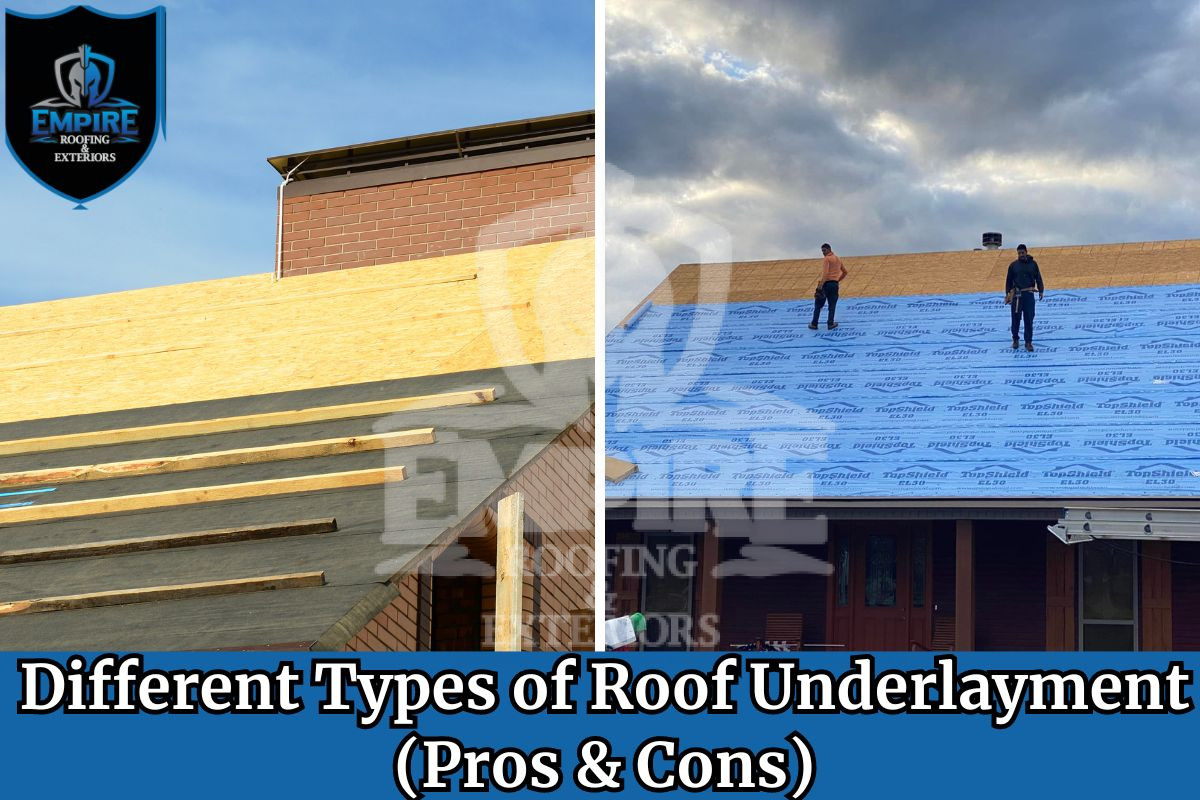Why Your Asphalt Shingles Are Curling and What It Means for Your Home

Asphalt shingle curling is one of the most recognizable signs that your roof needs attention. When shingles begin to lift at the edges or corners, creating a wavy or cupped appearance across your roofline, this visible change signals underlying problems that can compromise your home’s protection. Many homeowners notice this issue developing gradually, making it easy to overlook until the damage becomes severe.
Louisiana’s intense heat and high humidity create challenging conditions for roofing materials throughout the year. The combination of scorching summer temperatures, frequent temperature fluctuations, and moisture exposure accelerates the aging process of asphalt shingles. These factors cause shingles to expand and contract repeatedly, weakening their ability to lie flat against the roof deck.
Recognizing why asphalt shingles curl helps homeowners understand when professional intervention becomes necessary. Several factors contribute to this common roofing problem, including poor ventilation, leaks, manufacturing defects, and normal wear from weather exposure. Early detection of shingle curling allows property owners to address roof ventilation issues and prevent more extensive damage that could lead to water damage, structural problems, and expensive repairs throughout the home.
Heat and Weather Damage Leading to Curled Shingles
Louisiana’s relentless summer heat creates particularly harsh conditions for asphalt shingles, causing them to gradually lose their flexibility and protective qualities. When temperatures soar above 90 degrees Fahrenheit for extended periods, shingles absorb excessive heat that dries out the asphalt compounds and underlying materials. This prolonged exposure causes the shingle edges to become brittle and begin lifting upward, creating the characteristic curled appearance.
Temperature fluctuations between day and night further stress roofing materials through constant expansion and contraction cycles. High humidity levels compound these asphalt shingle problems by trapping moisture that weakens the bond between shingle layers. When sudden thunderstorms bring rapid temperature drops and intense rainfall, the dramatic weather changes accelerate the warping process and contribute to premature aging.
Storm damage from hail, strong winds, and heavy rain can instantly transform minor shingle imperfections into significant curling issues. The force of wind uplift works against already weakened edges, while hail impacts create small fractures that allow leaks to happen. Poor roof ventilation issues trap hot air in attic spaces, creating temperatures that exceed 150 degrees and literally cook shingles from underneath. These combined weather factors make regular roof shingle maintenance essential for preventing shingle damage and identifying early shingle replacement signs before minor curling becomes a major structural problem.
Poor Ventilation Creates Moisture Issues
Inadequate attic ventilation creates a destructive cycle that accelerates asphalt shingle problems by trapping hot air and moisture beneath the roof deck. When air cannot circulate properly through the attic space, temperatures can reach dangerous levels that cause shingles to heat up from below rather than just from sun exposure above. This trapped heat forces shingle materials to expand and contract repeatedly throughout daily temperature cycles, creating stress that leads to curling, cracking, and premature failure.
The combination of excessive heat and humidity attacks asphalt shingles from multiple directions, causing them to lose flexibility and begin lifting at the edges. The constant expansion and contraction from temperature fluctuations gradually breaks down the structural integrity of individual shingles across the entire roof system.
Several warning signs can indicate a failing roof ventilation issue that requires immediate attention. Visible water stains on attic walls or ceiling surfaces suggest trapped humidity that accelerates shingle damage. Ice dams forming during the winter signal poor air circulation, while unusually high energy bills often indicate that trapped hot air is forcing cooling systems to work harder.
Installation Mistakes That Cause Premature Shingle Curling
Improper installation techniques create weak points in roofing systems that accelerate shingle curling problems long before natural aging occurs. Incorrect nail placement is one of the most common installation errors, with nails driven too high, too low, or at wrong angles, compromising the shingle’s ability to lay flat against the roof deck.
Using incorrect nail types or inadequate fastener lengths creates additional vulnerabilities that contribute to asphalt shingle problems. Short nails fail to properly secure shingles to the decking, while galvanized nails that rust over time lose their holding power and allow shingles to shift. Insufficient shingle overlap during installation leaves gaps where water can get in, creating moisture damage that weakens adhesive bonds and promotes curling along exposed edges.
Rushing through installation often leads to substandard workmanship that creates numerous weak spots throughout the roofing system. Contractors who skip proper preparation steps, use inferior materials, or ignore manufacturer specifications increase the likelihood of premature failure. Poor installation practices prevent shingles from forming proper seals, making roof shingle maintenance more challenging and creating conditions where preventing shingle damage becomes nearly impossible. These installation defects typically manifest as early shingle replacement signs within just a few years rather than decades of expected performance.
Age and Normal Wear Affecting Your Shingle Performance
Asphalt shingles typically provide reliable protection for about 15 to 20 years, depending on material quality and environmental conditions. As shingles approach the middle of their expected lifespan, natural aging processes begin breaking down the petroleum-based compounds that give them flexibility and weather resistance. The granules that protect against UV rays gradually wear away through wind, rain, and thermal cycling, exposing the underlying asphalt mat to direct sunlight that accelerates their deterioration.
Normal aging causes shingles to become increasingly brittle and prone to curling as the asphalt compounds dry out and lose their elasticity. This natural hardening process makes shingles less able to expand and contract smoothly with temperature changes, creating stress along the edges that eventually leads to upward curling. The adhesive strips that seal shingle tabs also weaken over time, reducing their ability to hold edges flat against the roof deck during high winds.
Distinguishing between normal aging and premature failure requires understanding typical wear patterns and timeframes. Shingles showing significant curling before reaching the 10-year mark likely indicate a problem with the installation, ventilation issues, or manufacturing defects rather than natural wear. However, when aging roof symptoms appear on shingles approaching the 20-year mark, the curling may represent expected deterioration that signals approaching replacement needs. Professional roofing contractors can assess whether observed wear patterns align with the roof’s age and help determine if immediate repairs or full replacement will better address the underlying asphalt shingle problems.
Simple Ways to Prevent Shingle Curling Before It Starts
Taking proactive steps to maintain your roof system significantly extends shingle life and prevents the conditions that lead to premature curling. Regular maintenance tasks help homeowners identify potential problems early and address minor issues before they turn into expensive repairs. Simple preventive measures create an environment where asphalt shingles can perform as designed throughout their expected lifespan.
Proper gutter cleaning is one of the most important maintenance tasks for preventing shingle damage. Clogged gutters force water to back up under shingle edges, creating water problems that weaken adhesive bonds and promote curling. Clean gutters every fall and spring, removing leaves, debris, and any blockages that prevent water from draining properly. Check downspouts to be sure that water flows away from the foundation of your roof rather than pooling near the roof edge.
Ensuring adequate attic ventilation prevents the trapped heat and moisture conditions that accelerate asphalt shingle problems. Check that soffit vents remain clear of insulation or debris that blocks air intake, while ridge vents provide proper exhaust for hot air to escape. Professional inspections every 1 to 2 years help identify roof ventilation issues before they cause widespread damage. Seasonal maintenance includes removing debris from roof surfaces, checking for loose or damaged shingles after storms, and monitoring for early shingle replacement signs like granule loss or edge lifting. These routine maintenance practices create conditions that help prevent curling and extend the overall performance of your roofing system.
When to Call Professionals for Shingle Repair or Replacement
Certain warning signs indicate that curled shingles require immediate professional attention rather than continued monitoring. Multiple affected areas across the roof’s surface suggest systematic problems that go beyond isolated damage from storms or minor wear. When curling appears in clusters or affects entire roof sections, this widespread deterioration often signals underlying issues like ventilation problems or installation defects that require comprehensive solutions.
Visible underlayment exposure through curled or missing shingles creates emergency conditions that need quick and professional intervention. This exposure leaves the roof deck vulnerable to water damage, structural deterioration, and interior leaks that can cause extensive property damage. Additional urgent shingle replacement signs include granule loss covering large areas, cracked or split shingles, and daylight visible through the roof from inside the attic space.
Professional roof inspections provide evaluations that determine whether repairs or complete replacement would offer the most cost-effective solution. Experienced roofing contractors assess the extent of damage, evaluate remaining shingle life, and identify contributing factors like roof ventilation issues that must be addressed. The inspection process includes examining attic ventilation, checking flashings and gaps, and documenting aging roof symptoms throughout the entire system.
Contractors consider multiple factors when recommending repair vs. replacement options, including the roof’s age, extent of damage, and underlying structural conditions. They evaluate whether addressing current asphalt shingle problems through targeted repairs will provide lasting solutions or if a full replacement would better serve your home’s long-term protection needs.
Protect Your Roof with Empire Roofing & Exteriors
If you notice the signs of curling shingles on your roof, it’s important to act quickly to prevent further damage to your home. Shingle curling can lead to leaks, increased energy costs, and even structural damage if left unaddressed. At Empire Roofing & Exteriors, we specialize in diagnosing and resolving roof issues caused by Baton Rouge’s challenging climate.
Call us today at (225) 347-8877 and schedule a roof inspection with our expert team, who are ready to provide you with effective solutions tailored to your specific needs.



